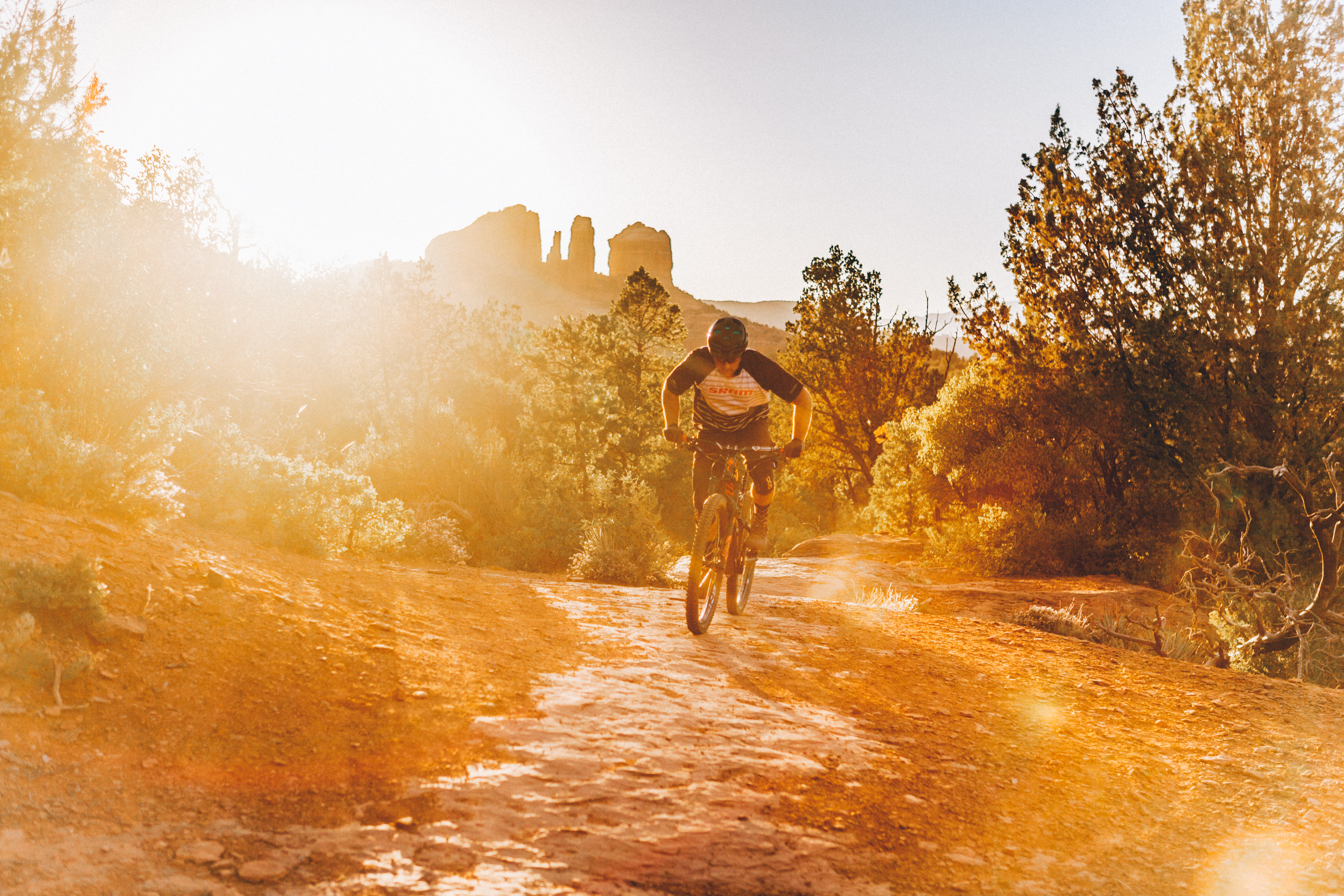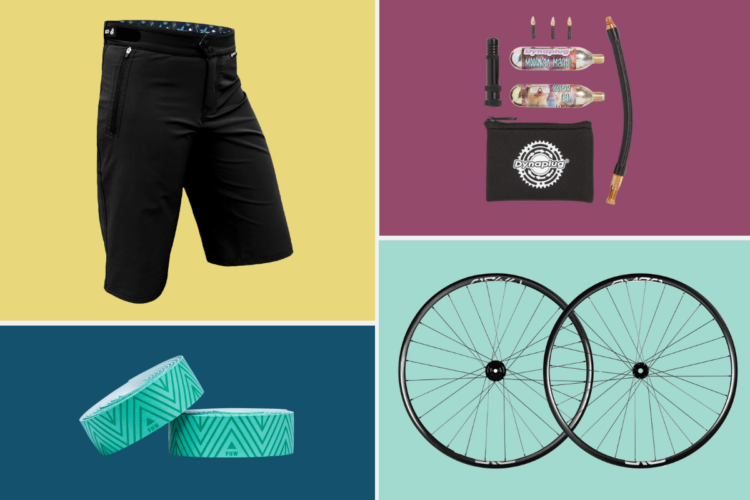
There’s a sense of freedom that comes from hitting the road, or catching a plane for a mountain bike vacation. For most, trips lack a rigid itinerary, other than getting somewhere, checking into a room, and prepping to ride. There’s maybe a trail or two on the to-do list, or a brewery that is without question a post-ride stop.
The hard part comes before putting the car in drive. There are so many mountain bike destinations right now that drawing up plans for the summer MTB trip can cause a rift in the family.
Whistler, Moab, and Crested Butte are scenic, and iconic destinations, but new places have proved that you can satisfy riders without alpine peaks or thousands of feet of elevation.
Places like Bentonville, Arkansas and Sedona, Arizona were absent from mountain biker’s lists a decade ago, and now have booming tourist economies thanks to strategic plans years in the making. And, places like Crested Butte? They’ve had to adapt, too.

Andrew Sandstrom, a public relations manager for the Crested Butte and Gunnison area says that mountain biking’s birthplace has hardly been able to rest on its laurels. The town has had to work just like anyone else to continuously promote its vast trail network. “It’s something that we haven’t let the gas off of,” he says. “It’s one of those things that if we let it slip and let our reputation carry us, [we’re] going to get knocked back down the list.”
Crested Butte’s attraction has always been its giant pot of trails, both front and backcountry, matched with the rugged scenery.
“While [Marin County] was building a lot of the tech used in mountain biking, here they were building trails,” says Sandstrom.
The trails never stopped growing, and between Gunnison and Crested Butte, there’s roughly 750 miles of singletrack. That’s always been a very marketable number for them, and a statistic that a lot of tourism spots now tout in their own advertising. Although the trails in Crested Butte are typically only rideable in the summer months, trails in Gunnison dry out more quickly and extend the bike and tourism season.
There is a challenge to the types of trails found in Crested Butte. The destination’s reputation has always originated from its high peaks, thin air, wildlife, and distance from civilization.
“A lot of the miles of trail out here are pretty unmarked. You don’t see a lot of people. To a certain extent, it’s a high barrier of entry. You have to be a pretty bold person to get out there,” says Sandstrom.
That doesn’t necessarily appeal to every mountain biker. So, Crested Butte works to mitigate the perceived risk by improving signage and navigation. Crested Butte and Gunnison Tourism developed the CBGTrails app with the help of a mountain biker who got lost on the trails in Crested Butte and slept for a night in the wilderness.
Sandstrom says that the app has nearly every trail in the area, which other apps miss out on. The CBGTrails app is free for visitors to use, and includes a checklist of the trails to provide an incentive to ride them all. The app intends to highlight other, less-traveled trails also to alleviate the squeeze on popular ones like Trail 401 in the summertime.
In contrast with the far back, wild trails of Crested Butte, Sedona couldn’t be more different. Look at a map and it’s easy to see the difference. As Crested Butte’s trails start near town, and spread further away and into the backcountry, Sedona’s trails wrap almost perfectly around the city and its neighborhoods, with trails that start where city streets end.
“One of the things that makes Sedona truly unique as a mountain bike destination is that fact that you can ride to the ride. You don’t have to drive to a trailhead. You can leave from your hotel and access 300 miles of trail,” says Jennifer Wesselhoff, the president of the Sedona Chamber of Commerce and Tourism Bureau.

Up until six years ago though, Sedona didn’t actively promote itself as a mountain bike destination. It was largely an arts town, with regular festivals tied to health and wellness and the beauty of Sedona. The US Forest Service in the Coconino district also wasn’t permitting hiking and mountain bike guides regularly. Without legit guide businesses that could safely take tourists out, Sedona didn’t want to advertise the trails.
Things changed eventually and the Coconino Forest Service District clarified their procedures for a competitive permit process which legitimized guide businesses. After that, Sedona could comfortably get the word out.
Media outlets talked about Sedona more often and the Sedona Mountain Bike Festival settled in. The event, which takes place in March, now brings in an estimated $2M over the three day weekend. Things like this changed the perspectives of people in the area who may not have had an accurate representation of what a mountain biker is in their mind.

Then, the Sedona Tourism Bureau was able to draw up a better picture of their target customer and what they want. Mountain bikers are typically a high-end demographic, with a high income and education level, that share a vision of environmentalism and stewardship for the land.
Wesselhof refers to Sedona as a “product” and mountain bikers as “customers,” which she notes may not sound right. But, for a tourism agency trying to market itself, it makes sense.
Now that Sedona is established, the city faces new challenges to keep residents happy and tourists coming.
Parking at certain trailheads fills up and overflows onto neighborhood streets. Wesselhoff hopes that the city will soon see a more robust transportation system that better connects trails so that visitors can get around even easier without their car. Proper signage is just as important for Sedona as it is for Crested Butte, since visitors want a stress-free experience.
Wesselhoff says through certain surveys they can measure a 98% satisfaction rate for a tourist’s trip to Sedona. The survey methods aren’t perfect, but intercept surveys at trailheads, surveys at visitor’s centers, and post-visit electronic surveys help. By learning what a tourist has to say after their visit, towns can adapt and make changes where necessary.
By estimating how many attendees the festival has, and how much they spend on lodging, food, and recreation, Sedona can estimate the $2M economic impact mentioned above.
Destinations and tourism agencies now look at numbers like the $2M from the bike festival, or the study that People for Bikes and the Walton Brothers conducted that showed that bicycling in Northwest Arkansas impacted their economy by $137M in 2017, as a way to draw more investment,

The Walton Family Foundation published results of their study in 2018. The numbers rival longtime, and more picturesque destinations like British Columbia and Oregon. The study looked at how many tourists visited, the money they spent on bike products and events in Bentonville and the greater area, and also the health and spending habits of residents.
In a herd with Crested Butte, Whistler, and Moab, Bentonville would be the black sheep. Ten years ago, the town didn’t have any singletrack at all. The Walton Foundation’s goal at first wasn’t to build a rival destination, but to increase the health and recreation opportunity for residents and employees of Wal-Mart. If anything, they were trying to rival Austin or Portland.
In 2007, the Walton Brothers built five miles of trail in what used to be a livestock area, and is now the Slaughter Pen trail network. Little by little, the brothers worked with trail builders and garnered support from the community to add trail.
Phase two of the Slaughter Pen build added another seven miles in 2008 and 2009. In the final phase in 2010, they added another five miles and started to bring the trails closer and closer to the town center so mountain bikers could ride dirt to the phase one and two trails. Shortly thereafter, the All-American Trail was built and connected trail networks around Bentonville and made it easier to access them from downtown. The city now owns and manages the Slaughter Pen network.
As things evolved, it became more clear that Bentonville could be a tourist destination after all. Representatives approached IMBA in 2014 and asked if they’d consider the city for the annual World Summit. IMBA said no, but encouraged Bentonville to apply again soon. In 2016, Bentonville got its wish. That same year, the city broke ground on Coler and completed the Back 40 trails.
New trails are growing at an average of about a mile-and-a-half a week around Northwest Arkansas. Visit Bentonville, an area tourism group, also hired someone to promote bike-related tourism full-time. Aimee Ross started in 2018 as the director of Bike Bentonville. Previously, she lived in Colorado and worked at IMBA. Ross says people were shocked that as a mountain biker she would move from Colorado to Arkansas, but she doesn’t sound remorseful. Almost right outside of the Visit Bentonville offices downtown, she can access trails on top of trails.
“It is probably the biggest selling point that we use to talk about this place as a mountain bike specific destination,” she says. And, builders developed trails with two things in mind: diversity and progression. The trails vary a lot and are meant to help riders get comfortable moving up to more advanced trails.
“It’s been phenomenal as a tourism destination because you get the likes of some of these really big name riders, and everyone has the initial thought of, ‘what, Arkansas?’ and they come here and are blown away.”

Trail builders have been creative with terrain and features around the trails in Bentonville. “While we might not have the most elevation gain, the trails are super fun and super playful,” says Ross.
Events like Outerbike and the Oz Trails Off-Road have helped keep Bentonville in the spotlight. Ross and the president of Visit Bentonville, Kalene Griffith, met with tourism representatives from Crested Butte at last year’s Outerbike. Griffith and Ross saw it as a chance to learn from each other’s marketing and tourism strategies.
With mountain bike destinations growing in numbers and popularity, it seems like things could get competitive between cities. Singletracks asked all three destinations if it feels that way. Ross summed it up the best.
“We see all of those areas as being supporters of what we’re doing here too, because the more destinations that pop up, the more people are going to go to those places, have a great time, and think about ‘where else can I go?'”
















